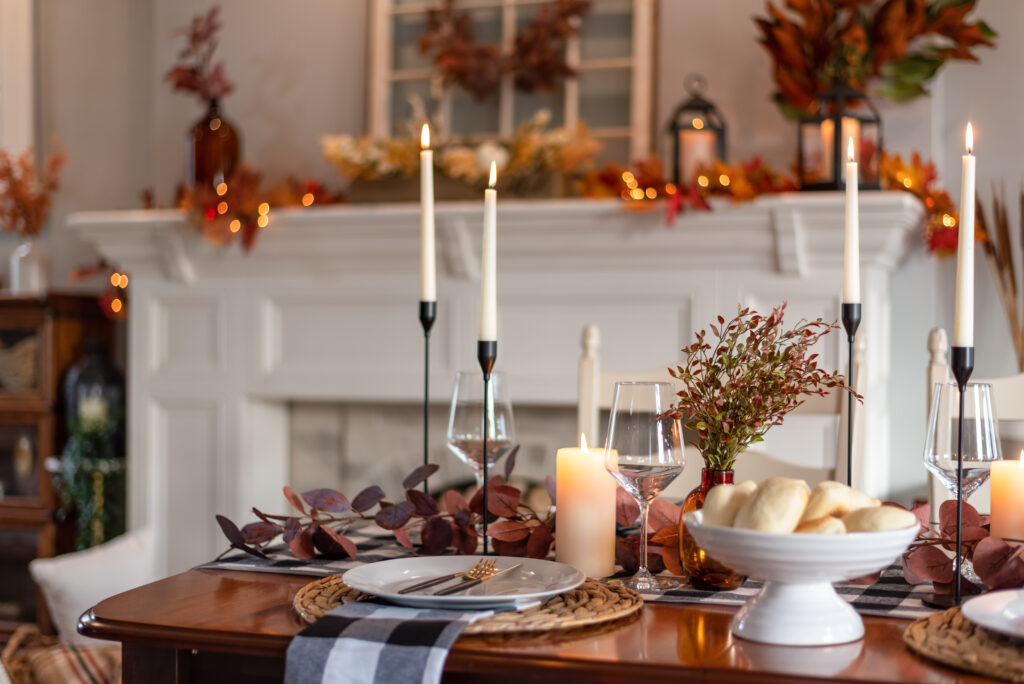
The holidays bring together many families and friends for gatherings and good home-cooked food. Ensuring you cook and store food properly can help keep you and your family safe from food-borne illnesses.
If you’re new to food safety, you’re in the right spot. These tips can help lessen your risk of getting ill or contaminating your food. Proper hygiene, food preparation, and storage are necessary for holidays.
Food Preparation, Handling, and Storage
Proper food preparation and handling is the first step in keeping your food safe at holiday get-togethers.
The World Health Organization (WHO) and Pan American Health Organization (PAHO) have released guidelines known as the 10 Golden Rules for proper food handling and preparation, as follows:
- 1. Choose safe foods: Some foods are unsafe unless processed, while others are best in their natural state, such as fruits and vegetables. While this isn’t an option for everyone, choosing foods like pasteurized milk or fresh or frozen poultry is safer than unprocessed products.
- 2. Cook Food thoroughly: Milk, eggs, poultry, and meats may be contaminated with disease-causing pathogens when they’re raw. The WHO recommends cooking your food thoroughly to an internal temperature of 160 degrees Fahrenheit.
- 3. Eat Cooked Foods Quickly: Eat foods quickly after they are prepared and come off the heat, as when they’re cooled to room temperature, it gives a chance for bacteria to form.
- 4. Carefully store cooked foods: Sometimes, you may need to store cooked food for a while. To safely do this, you must either keep the food warm and at a safe temperature or wait for it to cool down properly before refrigerating it. Putting hot food in a refrigerator before properly cooling down is a common cause of food-borne illness.
- 5. Reheat Food Properly: When you reheat food, ensure all parts of the food reach 160 degrees Fahrenheit to kill microbe growth.
- 6. Keep Cooked and Raw Food Separate: Keeping raw food away from safely cooked food can help avoid cross-contamination. You should also thoroughly wash all utensils and don’t use the same utensils for cooked and raw food.
- 7. Wash Your Hands Often: Washing your hands before you start cooking and between touching raw and cooked food can help ensure food safety. If you touch other objects or pets or use the restroom, you should also wash your hands before continuing to prepare food.
- 8. Clean Kitchen Surfaces Thoroughly: Keeping your kitchen surfaces for food preparation clean can help you avoid bacteria growth and prevent cross-contamination.
- 9. Keep Foods Away From Animals: Animals and insects can contaminate your food. Storing your food in closed containers is the best protection against animal bacteria.
- 10. Use Safe Water: If you have access to clean and safe water, ensuring safe water in food preparation is necessary. If you have doubts about the safety of your water supply, boil your water before using it to prepare food.
Safe Thawing Procedures
If you’re thawing food to cook for your holiday get-together, you must follow proper thawing procedures. There are three safe ways to thaw food, according to The Food Safety and Inspection Service; they are:
- Microwave thawing and cook your food immediately after
- Refrigerator thawing
- Cold water thawing
It’s unsafe to leave food to thaw on the counter for long periods or thaw in warm or hot water.
Cooking Frozen Foods
If you’re cooking frozen foods for the holidays, you will want to follow safety tips for cooking frozen foods.
The United States Department of Agriculture offers these tips for cooking frozen foods:
- Washing your hands before preparing food and during food preparation when cross-contamination is possible
- Look at food labels; even if you think the frozen food is pre-cooked, it still must be heated to a safe internal temperature. Some frozen foods even have labels that might say “cook and serve” or similar language
- Use a food thermometer to check the internal temperature of meat and poultry
- Frozen produce should be cooked first
- Fresh produce should be scrubbed with a vegetable brush
- Check for recalls of frozen food
Following these tips can help prevent illness.
Overview and Food Safety Resources
During the holiday season, many people cook food for themselves and others. While this can be a fun time, there may be a lot going on and many people in and out of the kitchen. Following food safety by sanitizing your hands and surfaces is a good place to start with preventing food-borne illnesses.
When handling, preparing, and storing food, looking out for cross-contamination, heating foods to a safe internal temperature, and checking food with a food thermometer is essential. To learn more about food safety, you can visit FoodSafety.gov for education, resources, and information on food recalls.
Resource Links
“WHO “Golden Rules” for Safe Food Preparation via The Pan American Health Organization (PAHO) and World Health Organization (WHO)
“The Big Thaw—Safe Defrosting Methods” via The Food Safety and Inspection Service
“Preparing Frozen Food” via The United States Department of Agriculture
 Medically reviewed by Shelby House, BSN, RN
Medically reviewed by Shelby House, BSN, RN